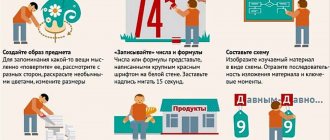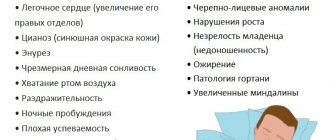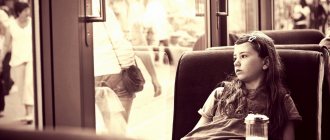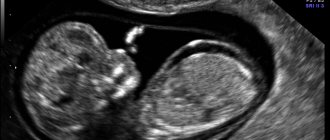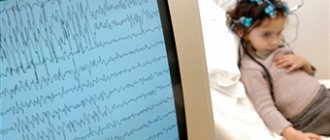Symptoms of ASD
Some experts believe that the first signs of autism can be seen in a child up to one year old, but there is no consensus on whether they can be considered symptoms of an autistic disorder. The most noticeable characteristics of children with ASD become after a year. Below are the signs that can already be noticed in the baby, so that parents can contact a specialist in time:
- the child does not react in any way to the appearance of his mother, does not recognize people he knows, does not smile;
- difficulty breastfeeding;
- It is very difficult to establish eye contact with a baby: he looks as if “through” people;
- children with ASD are afraid of any noisy electrical appliances, such as a vacuum cleaner;
- babies often have problems sleeping: they are awake, their eyes are open, but they do not sleep and are not capricious;
- when trying to pick up such children, the babies begin to arch their backs so that it becomes difficult to press them to the chest.
All these signs can appear in a baby at the age of 3 months, but not a single doctor will diagnose “autism” at this age, because the process of forming a daily routine and cognitive activity is still underway. At an older age, the baby develops more characteristic and obvious signs of ASD:
- monotonous movements;
- lack of interest in other people, reluctance to contact others;
- if there is a change of scenery, the child becomes frightened and very nervous;
- children have difficulty mastering self-care skills;
- the child does not play role-playing games;
- long periods of silence are replaced by monotonous repetition of one sound or word.
It should be noted that for little autistic children this behavior is absolutely normal; they do not feel any discomfort. Parents often mistake autism for hearing problems, because the reason for going to a specialist is a complaint of decreased hearing or suspicion of deafness. What is the connection between sound perception and autism?
Parents suspect a decrease in hearing abilities because the child does not respond when his name is called or does not react in any way to loud sounds. In fact, children do not have any problems with hearing; they simply live in their own world and do not consider it necessary to react to external stimuli until they begin to cause discomfort to the baby.
What is RAS?
I bring to your attention the first article on the topic of autism spectrum disorders (ASD) in children. This is exactly the definition of the diagnosis of ASD. There is still a whole series of articles ahead, including the upbringing of children with a similar diagnosis in preschool educational institutions, their support, training, development, as well as educational programs.
Autism spectrum disorders imply developmental disorders of the central nervous system, and the diagnosis has quite noticeable manifestations already at an early age, so its diagnosis is not difficult. The causes of the disease have not yet been clarified, so it is impossible to say with certainty what led to its development.
According to scientists, the nature of such disorders may be hidden in genetic characteristics, and may also arise as a result of unfavorable factors that influenced the child during the mother’s pregnancy.
Often signs of the disease can be detected before the age of 1 year, but they may not always be 100% indicative of ASD. However, after a year, when observing certain symptoms, parents should be wary: lack of contact with people, fear of noisy electrical appliances, sleep problems, neutral attitude towards the mother when the baby does not smile at her, monotonous movements, lack of self-care skills.
Such children live in their own special world, and they are quite comfortable in it. Teachers will have to prepare well in order to establish contact with children and find the right approach to them. To improve your qualifications, I recommend taking part in the following offline webinars:
- “Assessment and development of social, communication and learning skills in children with ASD”;
- «Modern special education: domestic and foreign experience of working with children with ASD";
- “Professional competencies of specialists working with children with ASD in a general education institution” + special offer for replenishing a personal account.
Also to help teachers is an excellent methodological guide “Inclusive Education. Handbook for a teacher working with children with disabilities .
Manifestation of ASD in preschool age
The development of children with ASD differs from other children. They have violations in the following areas:
- Communications. Children are very unsociable; there is no attachment to family and friends. Doesn't play with other children, doesn't like it when others want to take part in his play. They do not react in any way when they are approached with a request or simply called. Games are monotonous in nature, in which stereotypical actions predominate, preference is given to non-game objects (stones, sticks, buttons), and their favorite actions in the game may be pouring sand and pouring water. Yes, they can take part in games with children, but they have difficulty understanding the rules, do not react emotionally and do not understand the emotions of other kids. Of course, others do not like this behavior, as a result of which self-doubt appears. Therefore, such children prefer to be alone.
- Speech sphere. Interaction with society cannot but affect the development of a child’s speech. In addition to the fact that little autistic children do not pay attention to the speech of adults, they develop phrasal speech between 1 and 3 years of age, but it resembles commenting. Characterized by the presence of echolalia (involuntary repetitions of people). A common reason for consultation with a speech therapist is mutism in a child - refusal to communicate. A characteristic speech feature is that children do not use the pronoun “I”: they talk about themselves in the second and third person.
- Motor skills - disturbances in movements are not indicative of ASD, because some may have perfectly developed movements, while others will be noticeably behind the norm. Children may misjudge the distance to an object, which can cause motor awkwardness. They may walk on tiptoes; due to possible problems with coordination, children have difficulty learning to walk up stairs. There are difficulties in manipulating small objects and the inability to ride a bicycle. But such motor clumsiness and lack of coordination can be combined with amazing balance. Due to problems in the muscle tone of the mouth and jaw, salivation (increased and uncontrollable salivation) appears.
- What specialists always pay attention to when making a diagnosis is behavioral disorders. Children may stare at one point for a long time or look at an object, admire ordinary things and not be interested in toys. They love it when everything is in its usual place, and they get very upset when something doesn’t go the way they are used to. There may be sudden outbursts of aggression if the baby does not succeed in something or feels discomfort because he cannot express his emotions differently.
- There is good development of mechanical memory, but poor understanding of the content of fairy tales and poems. As for intellectual activity, some autistic children may have very high intelligence for their age, and even be gifted in some area. Usually they say about such children that they are “indigo”. And some may have reduced intellectual activity. In any case, their learning process is unfocused and is marked by impaired concentration.
The main races of man, the reasons for their occurrence and evidence of unity
Humanity is currently represented by one species, Homo sapiens (Homo sapiens). However, this species is not uniform. It is polymorphic and consists of three large and many small transitional races
— biological groups distinguished by small morphological characteristics. These characteristics include: hair type and color, skin color, eyes, shape of the nose, lips, face and head, proportions of the body and limbs.
Races emerged as a result of the settlement and geographic isolation of the ancestors of modern people in different natural and climatic conditions. Racial characteristics are hereditary. They arose in the distant past under the direct influence of the environment and were adaptive in nature. The following large races are distinguished.
Negroid (Australo-Negroid, or equatorial)
the race is characterized by dark skin color, curly or wavy hair, a wide and slightly prominent nose, thick lips and dark eyes. Before the era of colonization, this race was common in Africa, Australia and the Pacific Islands.
Caucasoid (Euro-Asian)
The race is distinguished by light or dark skin, straight or wavy hair, good development of facial hair in men (beard and mustache), narrow protruding nose, thin lips. Representatives of this race are settled in Europe, North Africa, Western Asia and Northern India.
For Mongoloid (Asian-American)
The race is characterized by dark or light skin, straight, often coarse hair, a flattened wide face with strongly prominent cheekbones, average width of lips and nose, noticeable development of the epicanthus. Initially, this race inhabited Southeast, East, North and Central Asia, North and South America.
Although the large races differ markedly from each other in their complex of external characteristics, they are interconnected by a number of intermediate types that imperceptibly transform into one another.
As already noted, racial characteristics are hereditary, and, apparently, some of them in the past were of an adaptive nature. Thus, the dark skin of Negroids protects the body from bright sunlight; Air layers are created in curly hair that protect from heat. A wide nose and thick, swollen lips with a large surface of mucous membranes contribute to the rapid evaporation of moisture with high heat transfer. The light skin of Caucasians allows ultraviolet rays to pass through and thus promotes the synthesis of vitamin D, protecting a person from rickets. The narrow, protruding nose warms the inhaled air. Some features of the Mongoloids are the result of adaptation to the harsh, often dust storm-ridden climate of Central Asia.
The biological unity of human races is evidenced by:
- lack of genetic isolation and unlimited possibilities of crossings with the formation of fertile offspring;
- equality of races in biological and psychological terms;
- the presence of transitional races between large races that combine the characteristics of two neighboring ones.
- localization of skin patterns such as arcs on the second finger (in apes - on the fifth); All representatives of the races have the same pattern of hair arrangement on the head and other morphophysiological characteristics.
Source
:
ON THE. Lemeza L.V. Kamlyuk N.D. Lisov “A manual on biology for applicants to universities”
Accompanying children with ASD
If, based on the results of the examination, a child is diagnosed with autism, then he has the opportunity to attend a compensatory preschool institution or an inclusive group in a kindergarten or a group located at a psychological-pedagogical medical and social center or in short-term groups. Due to the fact that it is difficult for a child suffering from ASD to establish contact with others and gets lost in an unfamiliar environment, it is necessary for him to have a tutor with him to help him socialize.
Stay of children with ASD in kindergarten
The main goal of developing programs for children with ASD in preschool educational institutions is their integration into society so that they have equal rights along with other children. Children who attended preschool then adapt much more easily to new conditions and find contact with others.
When constructing correctional work with such children, it is necessary to use an integrated approach - this includes pedagogical, psychological and medical assistance to little “outlets”. To successfully implement the program, it is necessary to establish emotional contact with the baby. A comfortable environment is created for the child, excluding ways of interacting with the world that are inaccessible to him.
Preschool workers also organize socially correct ways of interacting with children. The subject-developmental environment of the kindergarten must take into account the developmental characteristics of a little autistic person, his interests and compensate for his existing impairments. It is desirable that the institution have a sensory room, because it allows you to relax the nervous system, affects the sensory organs, and the child develops a feeling of security and calm.
Treatment of autism spectrum disorders
There is currently no cure for autism spectrum disorder. However, there are a number of special educational and behavioral programs (often called interventions) that have been shown to be effective in improving the skills of children with ASD.
There are many different types of interventions for ASD, so it is often difficult to know which one will be best for your child.
The American Academy of Pediatrics recently published an “intervention checklist” that outlines what it believes are the most important principles and components for effective interventions. They are outlined below.
- The intervention must be intensive. The child must be actively involved for at least 25 hours per week, 12 months per year.
- The intervention should have a low teacher-to-student ratio (i.e., small classes). This is to ensure that the child has plenty of direct interaction with the teacher and that any group work is done in small groups of students.
- Interventions should involve family members, with particular emphasis on parent education.
- The intervention should provide opportunities for interaction with other children without ASD. This is how the child achieves certain developmental goals.
- The intervention should be highly structured, that is, based on a sequence of established procedures that we hope the child will be happy to accept.
- The intervention should include opportunities for the child to apply any new skills acquired in new environments and situations. For example, visiting new places or meeting people the child does not know.
Children with ASD at school
Probably one of the most important and difficult questions that arises before the parents of a special child is his further education. As such, there are no specialized school institutions for children with autism; everything will depend on what the PMPK decides: if the child has intellectual disabilities, they may recommend education in a type 8 school. If there are severe speech disorders, then speech schools. But often such children are allowed to study in a regular public school.
Many parents want their child to study in a mass institution for successful socialization in the future. Now, when the whole society is trying to integrate special children into society, special classes are being created in regular schools, but still not in all. Why is it difficult for a child to adapt to school conditions?
- Insufficient competence of teachers. Most teachers simply do not know how to behave with such children, because they do not know all the specifics of ASD. This problem is solved by improving the qualifications of personnel.
- Large class sizes. It is very difficult for an autistic child who avoids communication in every possible way to learn in such conditions.
- Daily routine and school rules - children will have to get used to new conditions, which is not easy for such children.
As in kindergarten, the main objectives of teaching children with ASD are their maximum integration into society and the development of an adequate attitude towards them on the part of their peers. The teacher should get to know the special child and his family before the start of the school year in order to find out his characteristics and establish contact.
At school, it will be necessary not only to implement the curriculum, but also to instill certain behavior in a student with ASD: he should have a permanent place in the classroom and a place where he can relax. The teacher must form in the children's group an adequate perception of a peer with special developmental needs through various conversations in which the topic of individuality is revealed.
Symptoms and signs
Because autism spectrum disorder can cause such a wide range of symptoms, there are many different ways to group these symptoms.
It is helpful for parents to know the signs and symptoms of ASD as they relate to their child's developmental stages.
Early signs of ASD: 6-18 months
Although it may be difficult for parents to detect, most children with ASD show signs between 6 and 18 months of age. These symptoms are explained below.
- The baby does not follow your gaze. For example, when you look at your watch, a non-autistic child will copy and look at your watch. In addition, your child does not look at objects that are pointed at.
- The child does not have a happy expression when they look at you.
- The child does not “talk”, i.e. responds “back and forth” when talking to him.
- The baby does not recognize or respond to the voice, but is still aware of other sounds, such as a bell ringing or a dog barking.
- Your baby doesn't show much interest in drawing your attention to things by pointing or reaching out to them.
- The child rarely or never makes gestures such as pointing or waving.
Signs of ASD in preschoolers
Signs of ASD usually become more obvious as the child gets older.
Language problems will become more noticeable. It is likely that the child will begin to have problems with social interaction. They will also show unusual behavior patterns.
The symptoms that often develop at this age are explained below.
Language development
The child may have a speech delay or may not speak at all. Most children can form two phrases such as “ball... want” or “I... drink” before the age of two.
Language delays do not usually affect children with Asperger's syndrome, but their speech may be affected in other ways. For example, it may sound very monotonous, flat and/or unusually fast.
Playback
The child may not show much interest in playing with toys in an imaginative manner, but they play in a repetitive manner.
For example, instead of pushing a toy car across the floor, a child can concentrate on turning one of the wheels on just the car. Or, instead of using leg blocks to create an object, they arrange the blocks in order of size or color.
Children with ASD often prefer to play with household objects such as rope, pens, or keys rather than toys. They happily play alone for hours without needing supervision or attention.
Social interaction
Many children with ASD often look right through someone. They have little or no awareness of other people.
The child may not be interested in other children of the same age or participate in common activities.
Some children with ASD may try to form friendly relationships with children but then behave inappropriately, such as suddenly kissing or hitting another child.
Behavior
Many children with ASD develop a repetitive pattern of physical behavior. These patterns are known as stereotypies.
Examples of stereotypies include:
- snapping fingers;
- flapping hands;
- rocking back and forth;
- constant and inexplicable sniffing of things;
- licking objects.
Many children with ASD develop a strict routine, such as watching a certain cartoon at a certain time on YouTube or watching a favorite video from start to finish, including all the opening credits. If these rituals are disrupted, the child may have a severe tantrum or harm himself by hitting his head or biting his own skin.
Children with ASD often seem unaware of the pain and trauma that prompts other children to seek help from their parents. Many parents with ASD report that their child has a serious cut or bruise, but the child seems happy.
Children with ASD may become suddenly upset by certain sounds, such as a vacuum cleaner or motorcycle, or the sudden appearance of a bright light.
AOP for children with ASD
Of course, the recommendation to attend mass kindergartens and schools does not mean that the educational processes will not take into account the characteristics of these children. An individual educational route is drawn up for them, an adapted educational program (AEP) is written, which reveals the content of correctional classes. The teaching staff must have a speech therapist, defectologist and psychologist, because the main approach to correctional work is complex.
Adapted programs for children with ASD include:
- gradual inclusion of children in the learning process;
- creation of special conditions;
- providing psychological and pedagogical support to the family;
- formation of social and cultural values;
- protecting the physical and mental health of the child;
- ensuring variability of educational programs and content of classes;
- maximum integration of students with ASD into society.
The development of such a program greatly facilitates the learning process of a child with ASD, because its development takes into account the developmental characteristics of such children and creates an individual learning program. Autistic students cannot be expected to learn the material as quickly as others; the psychological environment plays a big role, since it is very important for them to feel comfortable in new conditions. AOP allows autistic children to gain the necessary knowledge and integrate into society.
Working with special children
Correctional work with children with ASD involves the joint work of a speech therapist, speech pathologist, psychologist, educators and teachers, as well as active interaction with parents. Of course, it is impossible to leave such children alone all day in a new place - you need to gradually increase their time in the institution and reduce the time their parents are present.
It is best if the teacher begins or ends the lesson with a certain ritual; it is necessary to exclude all bright objects that may cause a negative reaction from the child. Teachers should wear clothes in soothing colors; it is advisable to exclude the use of perfume. The child must have a permanent personal workplace, all things must always be in their place. Participants in the educational process must follow a certain routine. The slightest disruption to schedule or change in environment can cause stress in autistic children.
Such little things are very important for the successful correction of the defect, therefore they create a positive emotional background in the child. In the classroom, it is very important to create a situation of success, constant encouragement, stimulation, since the acquisition of knowledge is closely related to personal interest. The child needs help if difficulties arise; during classes, it is necessary to use various visual aids.
Working together in pairs has a positive effect on children with autism. This is done not at the initial stage of education, but when the child has already become accustomed to the new environment. This type of work allows you to more effectively introduce the child into society. The psychologist corrects the child’s negative attitudes, works with the affective side of the defect, and helps the child and his parents adapt. A speech therapist deals with overcoming mutism and logophobia, creating motivation for communication and correcting speech deficiencies. A defectologist deals with the correction of the emotional-volitional sphere and the development of higher mental functions.
If a child is diagnosed with autism, this does not mean that he cannot attend an educational institution. With the right approach, an individually selected program, the baby will be able to gain all the knowledge, like other children.
Diagnostic criteria
Autism spectrum disorder (ASD) is a spectrum of psychological characteristics that describes a wide range of abnormal behavior and difficulties in social interaction and communication, as well as severely restricted interests and highly repetitive behaviors.
Autism spectrum disorder in ICD-11 06 Mental, behavioral and neurodevelopmental disorders Neurodevelopmental disorders 6A02 Autism spectrum disorder
Description Autism spectrum disorder is characterized by persistent deficits in the ability to initiate and maintain reciprocal social interaction and social communication, as well as a range of restricted, repetitive and inflexible patterns of behavior and interests. The disorder occurs during a developmental period, usually in early childhood, but symptoms may not fully appear until social demands exceed limited capacity. Deficits are severe enough to cause impairment in personal, family, social, educational, occupational, or other important areas of functioning and are typically pervasive and are observed in all areas of an individual's functioning, although they may vary depending on the social, educational, or other context . People on the spectrum demonstrate a full range of intellectual functioning and language abilities.
Included Autistic disorder Pervasive developmental delay Excluded Developmental language disorder (6A01.3) Schizophrenia or other primary psychotic disorders (6A10-6A2Z) All index terms There are no index terms associated with this item
6A02.0 Autism spectrum disorder without intellectual disability and mild or absent functional language impairment
6A02.1 Autism spectrum disorder with intellectual disability and mild or absent functional language impairment
6A02.2 Autism spectrum disorder without intellectual disability and with functional language impairment
6A02.3 Autism spectrum disorder with intellectual disability and functional language impairment
6A02.4 Autism spectrum disorder without intellectual disability and lack of functional language
6A02.5 Autism spectrum disorder with intellectual disability and lack of functional language
6A02.Y Other Specific Autism Spectrum Disorder This “other specific” category is a residual category.
6A02.Z Autism spectrum disorder, unspecified This “unspecified” category is residual.
Autism spectrum disorder in DSM-5
The Diagnostic and Statistical Manual of Mental Disorders, Fifth Edition (DSM-5), developed and published by the American Psychiatric Association on May 18, 2013, includes autism spectrum disorders ( ASD (Autism Spectrum Disorder, ASD) 299.00 (F84.0) the following diagnostic criteria:
A. Persistent impairments in social communication and social interaction in a variety of contexts, present or historically manifested in the following (examples are provided for illustrative purposes and are not exhaustive, see text):
1. Violations in social-emotional reciprocity; starting, for example, with abnormal social proximity and failures to maintain normal dialogue; to a decrease in the exchange of interests, emotions, as well as influence and response; to the inability to initiate or respond to social interactions. 2. Impairments in nonverbal communicative behavior used in social interaction; starting, for example, with poor integration of verbal and non-verbal communication; to abnormal eye contact and body language or impairment of understanding and use of nonverbal communication; to the complete absence of facial expressions or gestures. 3. Impairments in establishing, maintaining and understanding social relationships; starting, for example, with difficulties in adapting behavior to different social contexts; to difficulty participating in imaginative games and making friends; to a visible lack of interest in peers.
B. Limited, repetitive pattern of behavior, interests or activities, which is manifested in at least two of the following (examples are provided for illustrative purposes and are not exhaustive, see text):
1. Stereotypical or repetitive motor movements, speech, or object use (eg, simple motor stereotypies, lining up toys or waving objects, echolalia, idiosyncratic phrases). 2. Excessive need for immutability, inflexible adherence to rules or patterns of behavior, ritualized forms of verbal or nonverbal behavior (for example, sudden stress at the slightest change, difficulty shifting attention, inflexible thought patterns, congratulatory rituals, insistence on a constant route or food). 3. Extremely limited and fixed interests that are abnormal in intensity or direction (for example, strong attachment to unusual objects or excessive preoccupation and fascination with them, extremely limited sphere of activities and interests, or perseveration). 4. Over- or under-reaction to sensory input or unusual interest in sensory aspects of the environment (eg, apparent indifference to pain or environmental temperature, negative response to certain sounds or textures, excessive sniffing or touching objects, fascination with lights or objects in movement).
Indicate severity: Severity is based on impaired social interaction and restricted, repetitive patterns of behavior (see Table 2).
C. Symptoms must be present early in development (but may not become fully apparent until social demands exceed limited capacity, or may be masked by learned strategies later in life).
D. Symptoms cause clinically significant impairment in social, occupational, or other important areas of daily functioning.
E. These impairments are not explained by intellectual disability (mental retardation) or general developmental delay. Intellectual disability and autism spectrum disorders often coexist; To diagnose comorbidity between autism spectrum disorder and mental retardation, social communication must be below what is expected for general developmental level.
Note: Individuals with well-established DSM-IV autism, Asperger's syndrome, or pervasive developmental disorder not specific (PDD-NOS) will be diagnosed with autism spectrum disorder according to DSM-V. Individuals with significant impairments in social communication and interaction whose symptoms do not meet criteria for autism spectrum disorder should undergo diagnostic evaluation for social communication (pragmatic) disorder (315.39 (F80.89)).
Additionally, indicate: With/Without accompanying mental retardation (developmental delay). With/Without accompanied by a defect (speech impairment). A disorder associated with a medical condition, or genetics, or a known environmental factor. (Coded note: Use additional code(s) to identify associated medical or genetic conditions.) A disorder involving developmental, behavioral, mental, or other neurological impairments. (Coded note: Use additional code(s) to identify neurodevelopmental mental or behavioral disorder.) With/Without catatonia(s) (see criteria for catatonia associated with another mental disorder, pp. 119-120 , for determining). (Coded note: Use additional code 293.89 [F06.1] autism-associated catatonia to indicate the presence of co-occurring catatonia.)
Table 2. Autism spectrum disorder severity levels
| Severity | Social communication | Restricted interests and repetitive behavior |
| Level 3 “Very Significant Support Needed” | Severe impairments in verbal and nonverbal social communication skills lead to significant impairments in functioning; extremely limited initiation of social interactions and minimal response to the social initiatives of others. For example, a person with a small repertoire of a few understandable words, rarely initiates social interaction, and when he does initiate it, he addresses it in an unusual manner and only to satisfy needs, and responds only to very direct instructions and forms of social communication. | Lack of behavioral flexibility, significant difficulty adjusting to change and changes, or restricted/repetitive patterns of behavior that are very disruptive and significantly impair functioning in all areas. Severe stress and/or severe difficulty changing activities or switching attention. |
| Level 2 “Need for significant support” | Marked impairments in verbal and nonverbal social communication skills; severe difficulties in social communication and interaction even with support; limited initiation of social interactions and limited or abnormal responses to the social initiatives of others. For example, a person expresses himself in a limited number of phrases and sentences, social interaction is limited to narrow special interests, and there are noticeable oddities in the nonverbal form of his communication. | Lack of flexibility in behavior, extreme difficulty adapting to change and changes, or restricted/repetitive patterns of behavior that occur with sufficient frequency to be noticeable to an outside observer and interfere with functioning in different contexts. Noticeable stress and/or significant difficulty changing activities or shifting attention. |
| Level 1 “Need for support” | Without support and assistance, disruptions in social communication lead to noticeable impairments. Has difficulty initiating social interactions and demonstrates clear examples of atypical or unsuccessful reactions to approaches from others. May appear to have decreased interest in social interactions. For example, a person who is able to speak in full sentences and is sociable, but mutual dialogue with others does not work out, and his attempts to establish friendly relations are strange and usually unsuccessful. | Inflexible behavior significantly interferes with functioning in one or more contexts. Difficulty switching between activities. Problems with organization and planning interfere with independence. |
Advice for parents of children with ASD
Parents of children with ASD do not always know what to do, who to contact, and it is difficult for them to realize and accept the fact that their child has autism. To effectively work to overcome ASD, it is necessary that the child’s loved ones follow the following recommendations:
- Maintaining a daily routine. It is necessary to say what you will do now and accompany all actions with photographs. This way the child will already be prepared for action.
- You need to try as much as possible to play joint games with your child.
- At the very beginning, you need to choose games and activities based on the baby’s interests, and later supplement them with new activities.
- People from the child’s immediate environment should be included in play activities.
- A good solution would be to keep a diary in which all the successes and difficulties that the child may encounter will be recorded. This is done in order to clearly show the specialist the development of the baby.
- Attend classes with specialists.
- A child should be rewarded for any success.
- The selection of tasks is based on the principle from simple to complex.
Causes of Autism Spectrum Disorders
The causes of autism spectrum disorder can be described in two ways:
- Primary ASD (also known as idiopathic ASD [self-onset]) : There is no underlying disease that could explain the nature of the symptoms.
- Secondary autism: There is an underlying medical condition that is believed to be responsible or partially responsible for the symptoms of autism.
90% of ASD cases are primary. The remaining 10% is secondary.
Genetic factors
Most researchers believe that certain genes that children inherit from their parents may make them more vulnerable to developing ASD. This is due to two reasons.
First, cases of ASD are known to run in families. If an older child develops the disorder, there is a 5-6% chance that any new child born to the same parents will also have the disorder.
If an identical twin develops ASD, there is a 60% chance that the other twin will also have it.
Currently, no specific genes have been identified that are associated with ASD.
Psychological factors
Much of the research into possible psychological factors underlying illness is based on a concept known as the Model of Mind or Theory of Mind.
Perspectives for children with ASD
What awaits the future for a child with autistic syndrome? It is impossible to completely overcome this defect; you can try to smooth it out as much as possible so that it is as less noticeable as possible. No one can give an accurate forecast. It all depends on the severity of the autistic disorder and how early correctional work began.
The behavior of children with ASD is quite specific, and even with successful integration into society, autistic traits will still remain, they just will not be pronounced. It may not be possible to fully integrate the child into society, and correctional work may proceed rather slowly. There are no exact forecasts, so you must always maintain a positive attitude, because a child with ASD really needs support.
What is autism spectrum disorder?
Autism spectrum disorders (ASD) are a range of related human developmental disorders that begin in childhood and persist throughout adult life.
ASD can cause a wide range of symptoms, grouped into three broad categories:
- Problems and difficulties with social interaction, such as a lack of understanding and recognition of other people's emotions and feelings.
- Impaired language and communication skills, such as delayed language development and the inability to initiate or participate in conversations properly.
- Unusual patterns of thinking and physical behavior . This involves repetitive physical movements such as tapping with the hands. The child develops certain behavioral habits that can upset him if these habits are disrupted.
There is currently no cure for the disease, but there are a number of treatments available to improve the symptoms listed above.
Types of ASD
Symptoms and signs of ASD can vary from child to child and from mild to severe.
Broadly speaking, there are three main types of disorder:
- Autistic disorder, sometimes known as "classic autism".
- Asperger's syndrome.
- Pervasive developmental disorder not otherwise specified (PPD-NOS), also called “atypical autism.”
Autistic disorder
Children with autistic disorder typically have severe problems with language, social interaction, and behavior. Many children with autistic disorders may also have learning difficulties and below average intelligence.
Asperger's syndrome
Children with Asperger syndrome have milder symptoms that affect social interaction and behavior. Language development is usually not affected, although problems in certain areas, such as understanding humor or figures of speech, often occur.
Children with Asperger's syndrome typically have above average intelligence. Some children have experience in areas that require logical thinking, memory and creativity, such as mathematics, computer science and music. (However, 1 in 200 children are exceptionally skilled, so-called "autistic").
Pervasive developmental disorder not otherwise specified
PRR-NOS can be considered a “diagnosis of exclusion.” A diagnosis of PDD-NOS is given to children who have some, but not all, of the characteristics of autistic disorder and/or Asperger's syndrome.
Most children with PDD-NOS have milder symptoms than children with autistic disorder, but do not have the strong language skills and above-average intelligence seen in Asperger's syndrome.
How common are autism spectrum disorders?
ASD is not uncommon, with an estimated 1 in every 100 children having ASD.
ASD is more common in boys than girls. Boys are three to four times more likely to develop autism than girls.
The number of diagnosed cases of ASD has increased over the past two decades, but this does not necessarily mean that the condition is becoming more common. Some experts say the increase in the number of diagnosed cases may be due to health workers becoming better at diagnosing cases of the disorder.
In the past, many children with autism spectrum disorder may have been mistakenly labeled as "difficult" or "shy" children and not given the treatment they needed.
